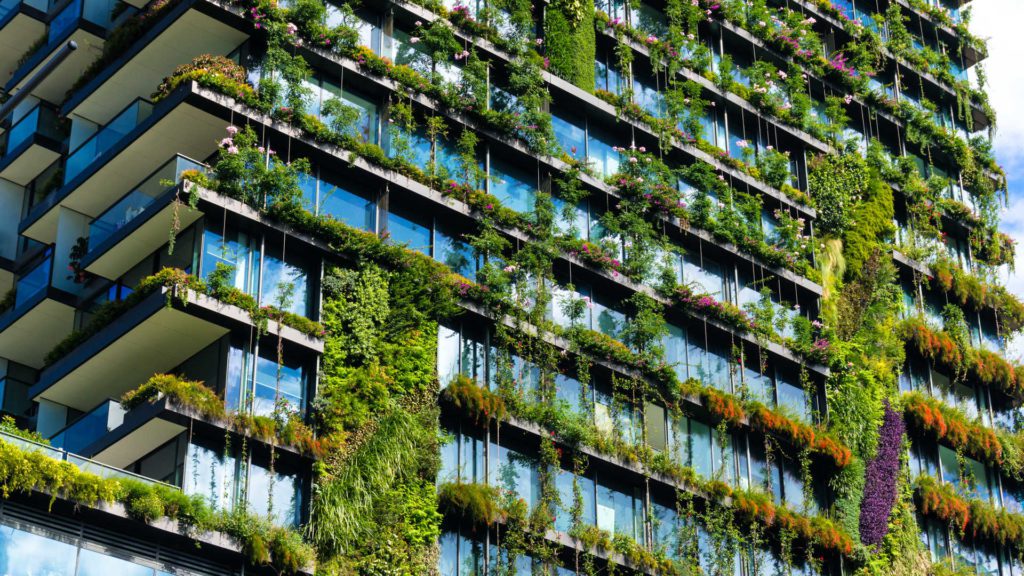In the face of escalating environmental challenges, green building practices offer hope. They mitigate the impact of construction and continue to inspire and pave the way for a sustainable future. Let’s navigate the world of green architecture.
Below, we’ll explore sustainable construction with insights into the materials, energy conservation, and successful construction innovation reshaping our environment.
Why are green building practices important?
Green building practices are crucial in addressing the environmental footprint of construction activities. Traditional construction methods contribute significantly to carbon emissions, resource depletion, and waste generation. By adopting green building practices, we can reduce energy consumption, minimise waste, and enhance the health and wellbeing of building occupants.
The benefits of green building extend beyond environmental impact. Economically, energy-efficient buildings reduce operating costs through lower energy and water bills. Socially, they provide healthier indoor environments with better air quality and natural lighting, which improve occupant health and productivity. Embracing green building practices is an environmental imperative and a smart economic and social strategy.
Key Principles of Sustainable Construction
Sustainable construction incorporates several principles to create environmentally responsible and resource-efficient structures throughout their lifecycle.
Energy Efficiency
It is paramount to reduce energy consumption through efficient design, materials, and systems. This includes optimising building orientation, using high-performance insulation, and installing energy-efficient windows and lighting systems.
Water Efficiency
Implementing measures to reduce water usage and promote water recycling is essential. Low-flow fixtures, rainwater harvesting systems, and efficient irrigation practices can achieve this.
Waste Reduction
Minimising construction waste through better planning, recycling, and the reuse of materials reduces landfill waste and helps conserve resources.
Site Selection and Development
A crucial aspect of sustainable construction is selecting sites that minimise environmental impact and promote biodiversity through landscaping and green spaces.
Materials Selection
Choosing sustainable, recycled, or locally sourced materials reduces the environmental impact of material extraction, production, and transportation. It also promotes the use of renewable resources.
Sustainable Materials and Design
The choice of materials plays a significant role in sustainable construction. Sustainable materials are those with a lower environmental impact over their lifecycle. Here are some key materials and design strategies:
Recycled Materials
Using recycled materials, such as reclaimed wood, steel, and concrete, reduce the demand for virgin resources and diverts waste from landfills. Recycled construction materials offer durability and performance comparable to new materials.
Renewable Materials
Bamboo, cork, and rapidly renewable plant-based materials are excellent choices due to their quick regeneration rates and minimal environmental impact.
Local Sourcing
Sourcing local materials reduces transportation emissions, supports the local economy, and ensures that the materials are suited to the local climate and conditions.
Innovative Design
Incorporating passive solar design, green roofs, and living walls enhances energy efficiency and promotes biodiversity. The passive solar design uses the building’s orientation and thermal mass to naturally regulate indoor temperatures.
Energy-Efficient Techniques
Energy efficiency is a cornerstone of green building practices. Implementing energy-efficient techniques reduces operational costs in infrastructure services and decreases greenhouse gas emissions. Here are examples of how to incorporate advanced energy-saving techniques:
- Insulation and Sealing: High-quality insulation and proper sealing of the building envelope prevent heat loss in winter and heat gain in summer. This reduces the need for heating and cooling, thereby saving energy.
- Energy-Efficient Windows: Double or triple-glazed windows with low-emissivity coatings reduce heat transfer, keeping buildings cooler in summer and warmer in winter. They also improve indoor comfort by reducing drafts and cold spots.
- Efficient Lighting Systems: Utilising LED lighting and smart lighting controls reduces energy consumption. LEDs consume less power and have a longer lifespan than traditional lighting options.
- Renewable Energy Systems: Installing solar panels, wind turbines, or geothermal systems can generate renewable energy on-site, reducing reliance on fossil fuels. Solar panels are becoming increasingly affordable and efficient.
- Energy Management Systems: Advanced energy management systems monitor and control energy usage in real time. These systems optimise energy consumption based on occupancy patterns and external conditions.
- HVAC Efficiency: High-efficiency heating, ventilation, and air conditioning (HVAC) systems reduce energy use while maintaining indoor comfort. Regular maintenance and the use of programmable thermostats further enhance efficiency.

Successful Green Building Projects
Because of the numerous benefits of green building practices, many innovators worldwide take on the job of reducing construction footprint and demonstrating the potential of creating sustainable, liveable, and efficient spaces. Here are some examples:
The Edge in Amsterdam
Known as the world’s most sustainable office building, The Edge in Amsterdam features solar panels, rainwater harvesting, and an energy-efficient lighting system. Its innovative design minimises energy use and promotes a healthy work environment.
One Central Park in Sydney
This mixed-use development incorporates green walls, rooftop gardens, and a central atrium that maximises natural light. It also features a trigeneration plant that provides electricity, heating, and cooling, significantly reducing its carbon footprint.
Bullitt Center in Seattle
Dubbed the greenest commercial building in the world, the Bullitt Center is designed to be energy-positive, generating more energy than it consumes. It features solar panels, a rainwater collection system, and composting toilets.
In New Zealand, there are:
Aorangi House in Wellington
This refurbished office building is a standout example of sustainable design, incorporating energy-efficient systems, sustainable materials, and advanced ventilation to significantly reduce its environmental impact.
Te Kehu Way in Auckland
This building in Sylvia Park is the first in New Zealand to receive a 6 Green Star Design and As-Built NZ v1.0 certified rating. It features high-performance design elements and sustainable construction practices that set a benchmark for future projects.
Hobsonville Point in Auckland
This large-scale development integrates sustainable practices in residential construction. Hobsonville Point includes energy-efficient homes, community green spaces, and sustainable transport options, promoting a holistic approach to sustainability.
Embracing A Greener Future with TSL
Green building practices are transforming the construction industry, offering environmentally responsible, economically viable, and socially beneficial solutions. By prioritising sustainable materials, energy efficiency, and innovative design, we can build a better tomorrow where our structures harmonise with the environment and enhance the quality of life for all.
At TSL, we offer fibre-reinforced concrete solutions, incorporating recycled and virgin materials to enhance performance and sustainability. TSL partners with Enviromesh to create low-carbon, fibre-reinforced concrete, reducing the need for traditional steel reinforcement and thus lowering environmental impact and construction costs. Our approach helps promote innovation and sustainability in civil construction.
For us, embracing green practices is about reducing our footprint and creating a sustainable legacy for future generations. As we continue to innovate and improve our approaches, the vision of a sustainable future becomes increasingly attainable. For civil construction services, get in touch. You can also contact us to learn which fibre solution suits your next green project.


